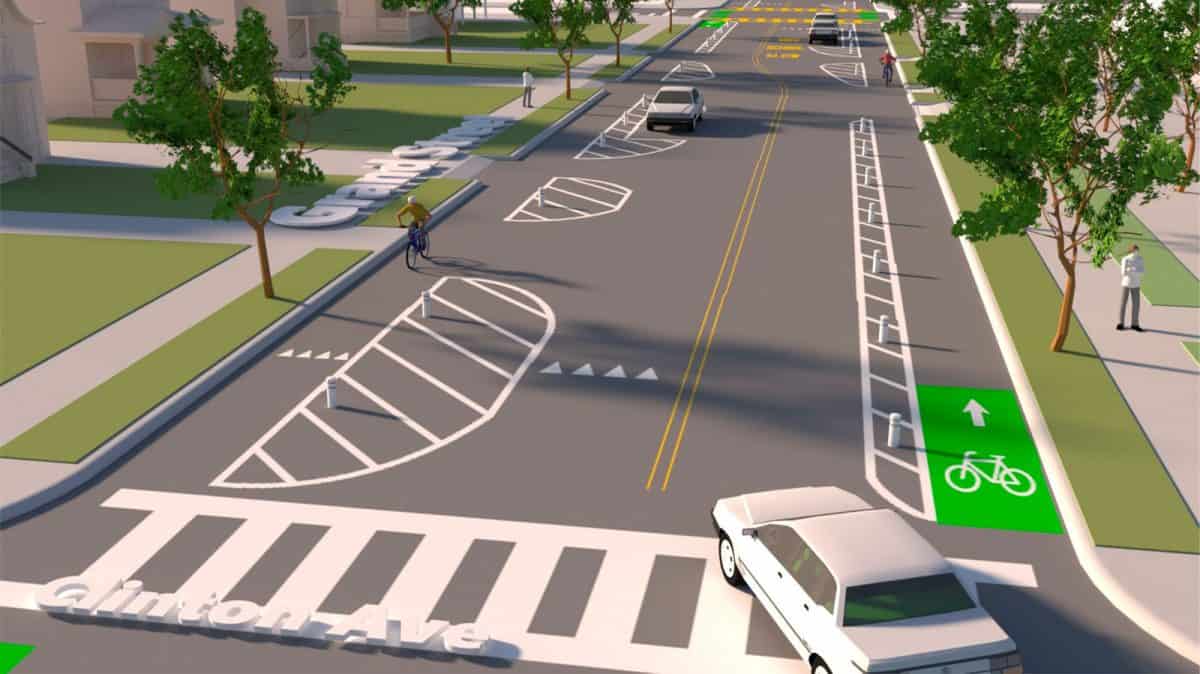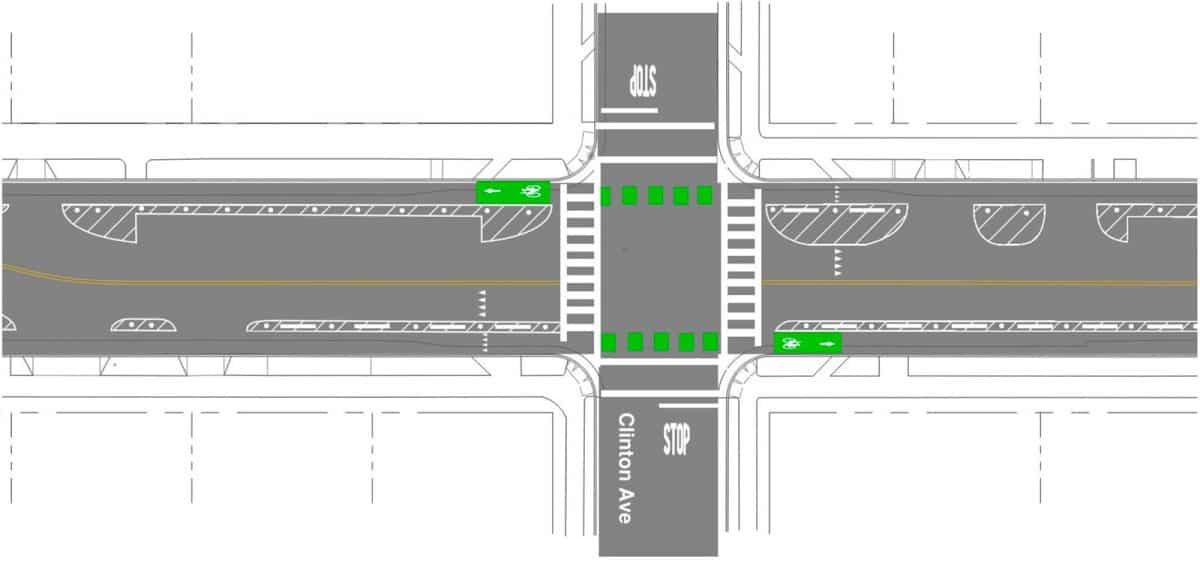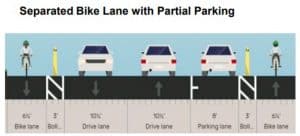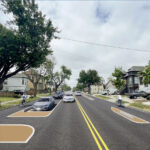Approval includes amendment for ADA review, other amendments.
At its June 22 meeting, City Council voted to proceed with the Grand Street Resurfacing and Safety Improvement Project with amendments requested by Mayor Marilyn Ezzy Ashcraft and Vice Mayor Malia Vella. The project is a plan to resurface and restructure a 0.7-mile segment of Grand Street between Shore Line Drive and Encinal Avenue to improve safety, mobility, and pavement condition. The City’s Vision Zero Plan, which aims to eliminate traffic deaths and severe injuries by 2035, identified the corridor as a high-injury corridor.

Project Overview
City staff said the proposed project would include:
- Repair and resurfacing of the street,
- Pedestrian safety improvements such as rapid flashing beacons, high visibility crosswalks, advanced yield or stop signs, and daylighting,
- Two new bus islands,
- Narrower automobile travel lanes to reduce speeding,
- ADA improvements such as bus islands with curb ramps, and
- Separated bike lanes where bollards and parked vehicles separate bicyclists from vehicular traffic.

As a result of the improvements, parking on Grand Street will be reduced, but the remaining number of public parking spaces aligns with observed peak occupancy. Due to the width of the street, it is not possible to provide parking on both sides for the entire street segment. Therefore, staff proposed separated bike lanes along the curb lanes with parking alternating between sides on each block as shown in the illustration above.
Due to concerns brought forth by Mayor Ashcraft, staff will amend the proposal to include having an Americans with Disabilities Act (ADA) consultant review how the project will address ADA concerns. For instance, the Mayor questioned how the disabled and elderly would access paratransit given the reduction in parking.

Other amendments included are that the west side of Grand Street between Otis and Shore Line drives will include a southbound protected bike lane, that a traffic engineer will review the proposed meandering design of traffic flow for safety, and that staff will further identify locations to install flashing signs and speed bumps.
Public Comment
Thirty-one of forty-four public speakers spoke in support of the staff proposal. One hundred seventy-one pages of written comments were also submitted, the majority of which were in support. However, one of the letters was a petition from over 100 Grand Street residents who were all opposed.
The petition commented that the proposed configuration would make it more difficult to see oncoming traffic when backing onto Grand Street, increase double-parking of delivery and service vehicles, and cause impatient drivers to unsafely swing around double-parked vehicles creating further risks.
The petition also said that aging in place would become challenging, as the elderly and those with disabilities rely on home health aides, delivery services, and visits to remain in their homes. Removing parking would impair the provision of services.

The Grand Street Resurfacing proposal’s strongest supporters were parents desiring safer, protected bike lanes for children to bike to school and parks, bicycling advocates interested in expanding the network of protected bike lanes by which to traverse the city, and climate advocates interested in encouraging citizens to reduce vehicle use. Some people were frustrated that discussion of the issue began after 9:30 p.m., preventing their children from participating in the debate.
Denyse Trepanier, President of Bike Walk Alameda, commented that protected bike lanes are an important safety upgrade compared to painted only bike lanes, that Grand Street is an important north-south connector that serves important family destinations, and that protected bike lanes enable more people of all abilities to choose cycling over driving.
Council Vote
Councilmember Trish Herrera Spencer voiced her opposition to the project, noting that pedestrian, bicyclist, and motorist deaths have increased in the last two years despite the City adding protected bike paths. She preferred actions that would slow drivers, such as speed bumps, stop signs, and police enforcement.
Mayor Ashcraft favored protected bike lanes but expressed concern about the design meeting ADA requirements and whether the meandering path might cause more accidents, particularly among inexperienced drivers.
Vice Mayor Vella supported the proposal and requested that the west side of Grand Street between Otis and Shore Line drives include a southbound protected bike lane.
In the final vote on the Grand Street Resurfacing Project, Mayor Ashcraft, Vice Mayor Vella, and Councilmember John Knox White voted in favor of the project with amendments to address specific concerns. Councilmembers Tony Daysog and Herrera Spencer voted against.
The City has published an Informational Fact Sheet [PDF] and Project Sheet [PDF] about the Grand Street resurfacing on their website, and the presentation to City Council [PDF] is also available for download.
Contributing writer Karin K. Jensen covers boards and commissions for the Alameda Post. Contact her via [email protected]. Her writing is collected at https://linktr.ee/karinkjensen and https://alamedapost.com/karin-k-jensen.



